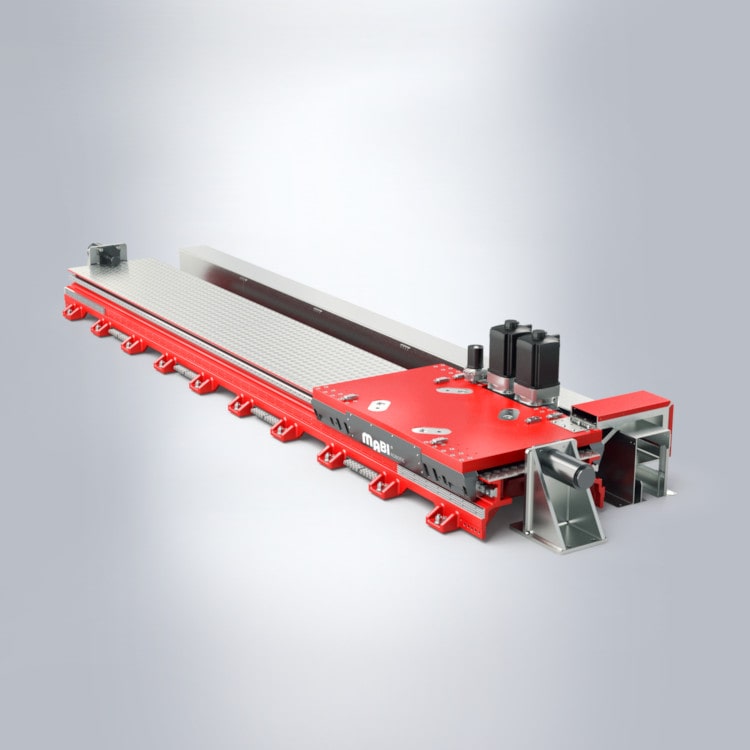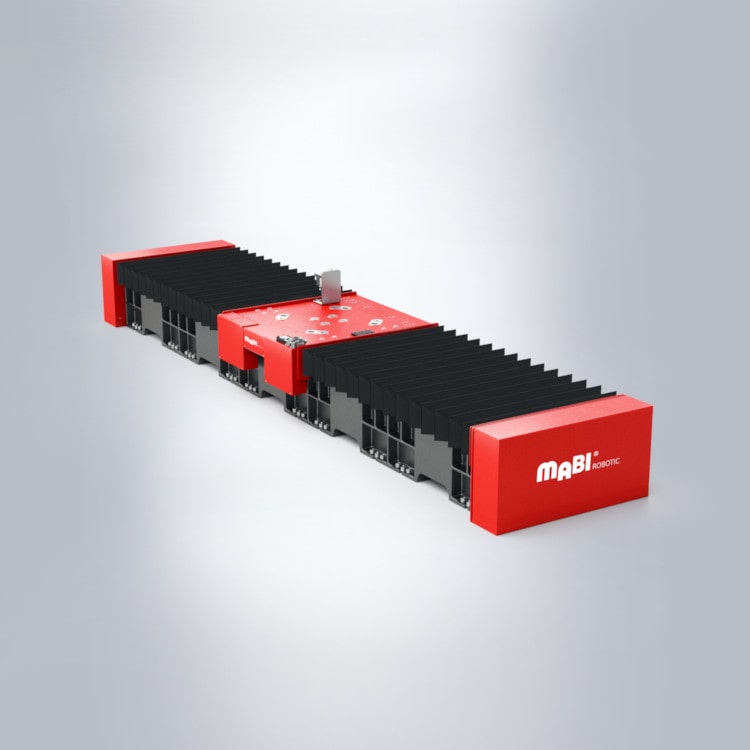Linear Rails for Robots with secondary Encoder
The linear axes from MABI Robotic increases the working space of your robot many times over. This enables you to machine effectively large scale components. The higher flexibility enables the realisation of complex applications. In this way different types of manufacturing can be combined, even over long distances. The integration into the existing controller can be done without any problems.



